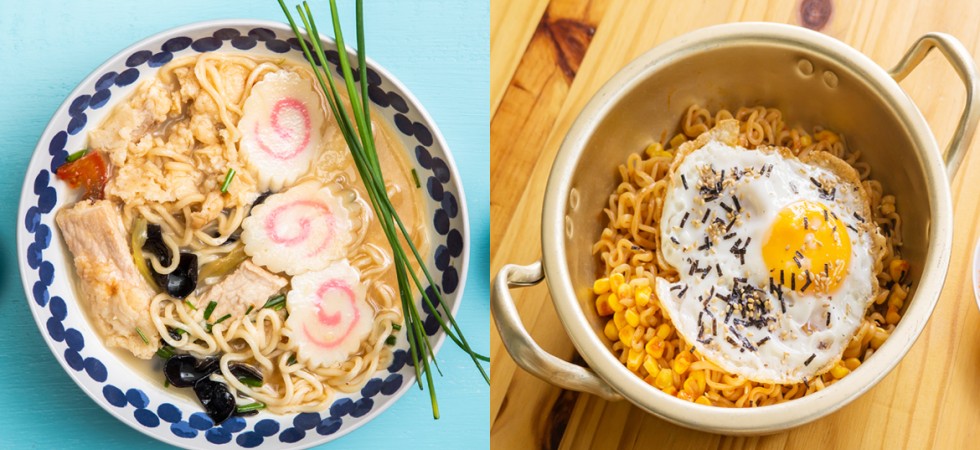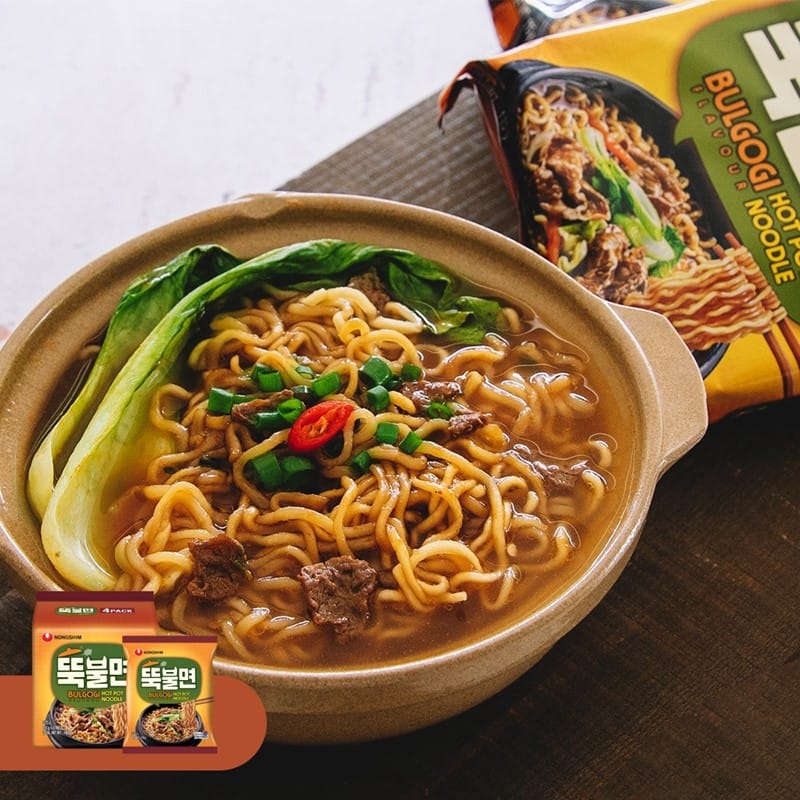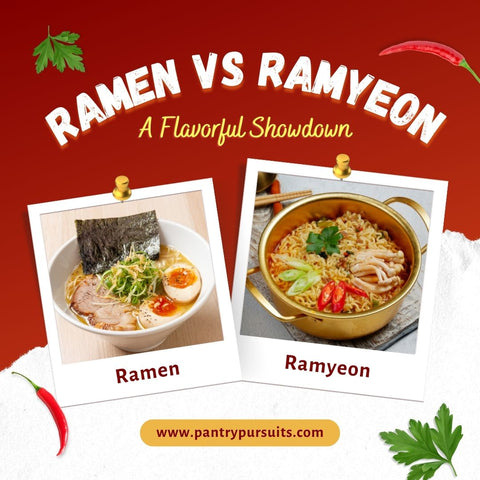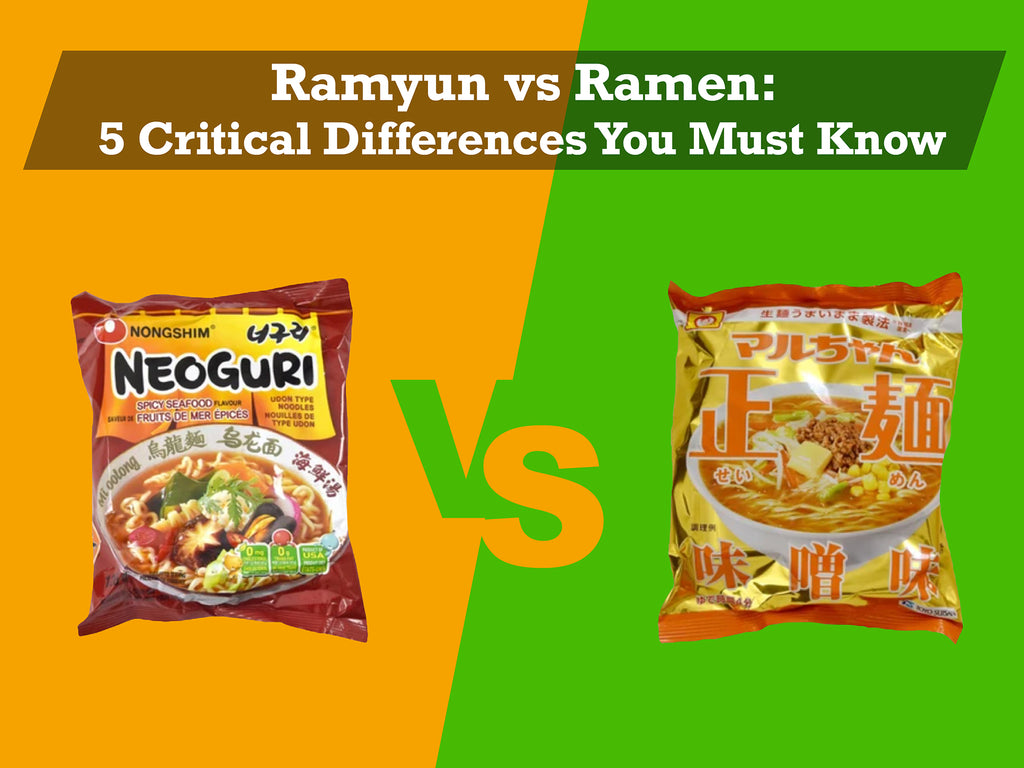Ramyun Vs Ramen: Introduction To Korean And Japanese Noodle Dishes

Ramyun and Ramen are two popular noodle dishes that have gained international recognition for their unique flavors and cultural significance. Ramen, a Japanese delight, originated in China and was later adapted and popularized in Japan. On the other hand, Ramyun has its roots in Japanese-style Ramen but has developed into a distinct Korean dish. Both dishes offer a delightful taste of Asian cuisine, but they differ in terms of ingredients, preparation methods, and flavors. In this article, we will explore the key differences between Ramyun and Ramen, as well as their cultural importance and recommended pairings.
Overview Of Ramyun And Ramen
Ramyun and Ramen are both popular noodle dishes originating from Asia. Ramen, a Japanese delight, has its roots in Chinese cuisine but has been adapted and perfected in Japan. It is known for its rich and flavorful broth and various toppings such as sliced pork, bamboo shoots, and seaweed. On the other hand, Ramyun is a Korean version of Ramen with its own unique twist. It is often characterized by its spicy and bold flavors, with ingredients like kimchi, beef, and vegetables. Both dishes offer a satisfying and comforting dining experience, each with its own distinct cultural significance and culinary traditions.
Cultural Significance Of Ramyun And Ramen
Ramyun and Ramen hold significant cultural importance in their respective countries. In South Korea, Ramyun has become an iconic part of the country’s food culture and is often associated with comfort and convenience. It is not only a popular meal among Koreans but also holds sentimental value, evoking memories of late-night college study sessions or cozy winter evenings at home. In Japan, Ramen is considered a culinary art form, with each region having its own unique style and flavor. It is a symbol of Japanese food culture and is often used as a representation of Japan’s high culinary standards. Both Ramyun and Ramen have gained international popularity and are now enjoyed by people all over the world, showcasing the cultural significance and global influence of these delicious noodle dishes.
Ramyun: Korean Noodle Dish

Ramyun is a popular Korean noodle dish that has gained widespread recognition and popularity. It is a spicier and bolder version of Japanese ramen, with a unique Korean twist. Ramyun typically features a broth made from beef or seafood, flavored with spices and chili paste to give it a fiery kick. The noodles used in Ramyun are thicker and chewier compared to ramen noodles. Popular additions to Ramyun include sliced pork, kimchi, green onions, and a variety of vegetables. With its rich flavor and comforting warmth, Ramyun has become a beloved dish in Korean cuisine.
History And Origins Of Ramyun
Ramyun has its roots in Japanese-style Ramen, which was introduced to Korea during the Japanese occupation in the early 20th century. Initially, Ramyun was considered a luxury food due to its high price and limited availability. However, with time, it became more accessible and gained popularity among the Korean population. Over the years, Ramyun has evolved into a distinctly Korean dish with its own unique flavors and characteristics. It has become a staple in Korean cuisine and is loved for its spicy and bold flavors.
Popular Variations And Flavors Of Ramyun
Ramyun offers a wide range of variations and flavors to suit every palate. One popular variation is Shin Ramyun, known for its spicy and bold flavor. This instant noodle dish is packed with a rich beef broth, dried vegetables, and a blend of spices that create a fiery kick. Another popular variation is Jjapaguri, a combination of two popular ramyun brands, Jjapaghetti and Neoguri. This fusion dish combines the chewy texture of Jjapaghetti with the spicy seafood flavor of Neoguri, resulting in a unique and delicious taste experience. Other variations include cheese ramyun, seafood ramyun, and kimchi ramyun, each offering its own distinct flavor profile. Whether you prefer a spicy kick or a savory seafood taste, there is a ramyun variety to satisfy every craving.
Ramen: Japanese Noodle Dish

Ramen is a popular Japanese noodle dish that has gained worldwide acclaim. Originally introduced from China, ramen has evolved over the years to become a staple in Japanese cuisine. It is characterized by its flavorful broth, which can be made with various ingredients such as pork, chicken, or seafood. Ramen noodles are typically thin and curly, providing a chewy texture that complements the broth. There are different styles of ramen, including shoyu (soy sauce-based), miso (fermented soybean paste-based), and tonkotsu (pork bone-based). Each style has its own unique flavors and toppings, such as braised pork, soft-boiled eggs, and sliced green onions. Whether enjoyed at a traditional ramen shop or as an instant meal, ramen offers a delightful and comforting dining experience.
Development Of Ramen In Japan
The development of ramen in Japan can be traced back to the early 20th century. It started as a simple Chinese-style noodle dish, but over time, it underwent significant changes to suit Japanese tastes and preferences. In the post-war era, ramen became a popular street food, originally served in portable stalls. As its popularity grew, dedicated ramen shops started to emerge, specializing in different styles and flavors. Today, ramen is not only enjoyed in traditional ramen shops but also available as instant noodles, showcasing the versatility and widespread appeal of this beloved Japanese noodle dish.
Different Types Of Ramen Styles And Broths
There are various types of Ramen styles and broths, each with its own unique characteristics. Some popular styles include:
- Shoyu Ramen: This style features a soy sauce-based broth, resulting in a savory and slightly salty flavor profile.
- Tonkotsu Ramen: Known for its rich and creamy broth, Tonkotsu Ramen is made by simmering pork bones for hours, creating a flavorful and thick soup.
- Miso Ramen: This style incorporates miso paste into the broth, adding a rich and salty flavor that complements the noodles and toppings.
- Shio Ramen: Shio refers to salt in Japanese, and this style of Ramen features a clear and light broth seasoned with salt, resulting in a delicate and refreshing taste.
- Tsukemen: Unlike traditional Ramen, Tsukemen is served with the noodles and broth separated. The broth is usually thicker and more concentrated, allowing the noodles to be dipped and coated with a strong flavor.
Each Ramen style and broth offers a unique taste experience, catering to different preferences and palates. Whether it’s the creamy richness of Tonkotsu or the refreshing simplicity of Shio, Ramen enthusiasts have a wide range of options to choose from.
Ramyun Vs Ramen: Ingredients And Preparation

When it comes to the ingredients and preparation of Ramyun and Ramen, there are some notable differences. Starting with the noodles, Ramyun noodles are typically thicker and chewier compared to the thin, curly noodles of Ramen. The broth also differs, with Ramyun often featuring a spicy and flavorsome soup base, while Ramen offers a variety of broths ranging from soy sauce-based to rich and creamy tonkotsu. Additionally, both dishes have their own unique toppings, such as kimchi and egg in Ramyun, and sliced pork and seaweed in Ramen. The cooking methods and serving styles may also vary, but both Ramyun and Ramen are typically enjoyed hot and are prepared quickly to retain their fresh flavors.
Variations In Noodles And Seasonings
In terms of noodles, Ramyun typically features thicker and more chewy noodles compared to the thin and curly noodles used in Ramen. The texture of the noodles can greatly affect the overall eating experience, with Ramyun noodles providing a more substantial and filling bite. Additionally, Ramyun often comes with a variety of seasonings and spices to enhance the flavor, such as gochujang (Korean red chili paste), garlic, and sesame oil. In contrast, Ramen may use soy sauce, miso, or tonkotsu (pork bone) broth as a base, along with seasonings like green onions, seaweed, and pickled ginger.
Cooking Methods And Serving Styles Of Ramyun And Ramen
Cooking Ramyun and Ramen is a relatively simple process. Both dishes require boiling the noodles in water until they are cooked to the desired texture. Ramyun often includes additional toppings such as sliced vegetables, eggs, and meat, which can be added to the boiling water to enhance the flavor and texture. On the other hand, Ramen typically comes with a variety of toppings such as sliced pork, green onions, and nori. After cooking, the noodles are typically served in a bowl with the broth and toppings arranged on top. This presentation allows for a visually appealing and delicious eating experience.
Flavor Profile And Taste

When it comes to flavor profile and taste, Ramyun and Ramen offer unique experiences. Ramyun, with its spicy and fiery broth, has a bold and intense flavor that packs a punch. The gochujang base adds a distinct heat that is balanced by the other ingredients. On the other hand, Ramen offers a wide range of flavors, from savory soy sauce to rich miso and hearty pork bone broths. The taste of Ramen is often characterized by its umami depth and delicate balance of flavors. Whether you prefer spice or savory notes, both Ramyun and Ramen promise a flavorful and satisfying bowl of noodles.
Taste Comparison Between Ramyun And Ramen
When it comes to taste, Ramyun and Ramen offer distinct experiences. Ramyun, with its spicy and fiery broth, has a bold and intense flavor that packs a punch. The gochujang base adds a distinct heat that is balanced by the other ingredients. On the other hand, Ramen offers a wide range of flavors, from savory soy sauce to rich miso and hearty pork bone broths. The taste of Ramen is often characterized by its umami depth and delicate balance of flavors. Whether you prefer spice or savory notes, both Ramyun and Ramen promise a flavorful and satisfying bowl of noodles.
Spicy Vs Savory: Contrasting Flavors Of Korean And Japanese Noodle Dishes
Ramyun and Ramen not only differ in their preparation and ingredients, but also in their flavor profiles. Ramyun is known for its bold and fiery taste, thanks to the spicy gochujang base used in the broth. The heat of the gochujang adds a unique kick, complemented by the other ingredients in the dish. On the other hand, Ramen offers a more savory and umami-rich experience. The various broths, such as soy sauce, miso, and pork bone, create a complex depth of flavors that is both comforting and satisfying. So, whether you prefer the fiery spice of Ramyun or the savory goodness of Ramen, both dishes offer distinct and contrasting taste experiences.
Conclusion

In conclusion, Ramyun and Ramen may share similarities as flavorful noodle dishes, but they are distinct in their origins, flavors, and preparation methods. Ramyun offers a fiery and bold taste with its spicy gochujang base, while Ramen provides a more savory and umami-rich experience with its various broths. Whether you prefer the heat of Ramyun or the comforting flavors of Ramen, both dishes offer a unique and satisfying culinary experience. So next time you’re craving noodles, dive into the world of Ramyun and Ramen and explore the contrasting flavors of Korean and Japanese cuisine.
Key Differences Between Ramyun And Ramen
Ramyun and Ramen may share similarities as flavorful noodle dishes, but they are distinct in their origins, flavors, and preparation methods. The key differences between Ramyun and Ramen are:
- Origin: Ramen originated in China and was later adapted and popularized in Japan, while Ramyun has its roots in Japanese-style Ramen but developed into a unique Korean dish.
- Broth: Ramen offers a diverse range of broths including soy sauce, miso, and pork bone, providing a wide array of flavors. On the other hand, Ramyun is renowned for its spicy and fiery broth, often with a base of gochujang. This gives Ramyun its distinct and bold taste.
- Noodles: Ramen noodles are typically thin and chewy, while Ramyun noodles are thicker and have a more elastic texture. The choice of noodles adds to the overall experience and mouthfeel of each dish.
- Toppings: Ramen and Ramyun both feature a variety of toppings, but there are some differences. Ramen commonly includes toppings such as sliced pork, seaweed, soft-boiled eggs, and green onions, while Ramyun often includes ingredients like kimchi, sliced sausage, and vegetables.
- Cultural significance: Ramen holds great cultural significance in Japan and is often seen as a comfort food. On the other hand, Ramyun is deeply rooted in Korean cuisine and is popular among the younger generation as a quick and satisfying meal.
These key differences make Ramyun and Ramen unique in their own right, offering distinct flavors and experiences for noodle lovers to enjoy.
Recommended Pairings And Serving Suggestions
When enjoying Ramyun or Ramen, there are several recommended pairings and serving suggestions to enhance the overall experience. Here are a few ideas:
- Side dishes: Serve Ramyun or Ramen with traditional Korean side dishes such as Kimchi, pickled radishes, or Korean-style fried dumplings (mandu).
- Soft-boiled eggs: Add a perfectly cooked soft-boiled egg to your bowl of Ramyun or Ramen for an extra creamy and rich flavor.
- Spicy toppings: Sprinkle some chili flakes or add a dollop of spicy chili paste (gochujang) to your Ramyun or Ramen for an extra kick of heat.
- Fresh herbs: Garnish your bowl with fresh cilantro, green onions, or Thai basil to add a refreshing and aromatic touch.
- Sesame oil: Drizzle a few drops of sesame oil over your noodles for a nutty and fragrant aroma.
Remember to customize your toppings and serving style according to your personal preferences to create a truly satisfying and enjoyable meal.
FAQ About Ramyun Vs Ramen: Understanding Korean And Japanese Noodle Dishes
Q: What is the main difference between Ramyun and Ramen?
A: Ramyun is the Korean version of instant noodles, known for its spicier broth and diverse range of toppings. Ramen, on the other hand, is a Japanese noodle dish with a variety of broth bases and regional variations.
Q: Are the noodles used in Ramyun and Ramen the same?
A: While both Ramyun and Ramen use wheat noodles, the thickness and texture of the noodles can differ. Ramyun noodles are typically chewier and thicker compared to the thinner Ramen noodles.
Q: What are common toppings found in Ramyun and Ramen?
A: Complementing the noodles, Ramyun often features toppings like kimchi, eggs, and vegetables, while Ramen commonly includes ingredients such as sliced pork, seaweed, and green onions.
Q: How do the flavors of Ramyun and Ramen differ?
A: Ramyun tends to have bolder and spicier flavors due to the use of ingredients like chili paste and kimchi. Ramen, on the other hand, offers a more nuanced flavor profile with options ranging from savory miso to rich tonkotsu broths.
Q: Can Ramyun and Ramen be customized to suit personal preferences?
A: Absolutely! Both Ramyun and Ramen are highly customizable dishes, allowing individuals to adjust the spice level, toppings, and broth flavors according to their taste preferences.
Q: Are there cultural differences associated with Ramyun and Ramen?
A: Yes, Ramyun is often viewed as a quick and convenient comfort food in Korean culture, while Ramen carries a deep culinary tradition in Japan, with various regional styles and meticulous preparation methods.

Madame Thai Cuisine is not just a restaurant; it’s a culinary journey through Thailand’s vibrant and diverse flavors. Our story began with a passion for sharing the authentic tastes of Thailand with the world. Situated in the heart of [location], Madame Thai Cuisine has been a beacon of Thai culinary excellence since [year of establishment]. Our commitment to using only the finest and freshest ingredients, combined with traditional cooking techniques, has earned us a reputation as a go-to destination for exquisite Thai dining.